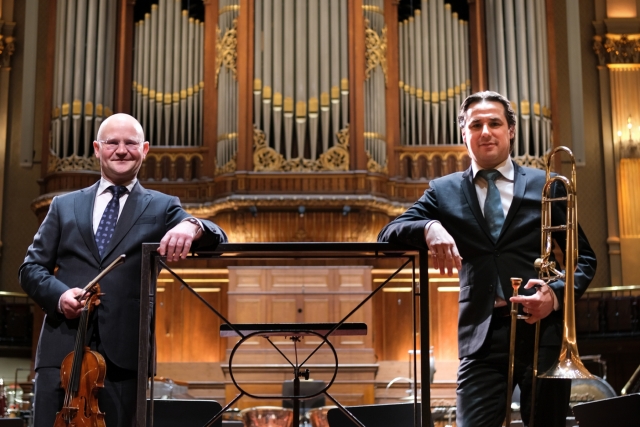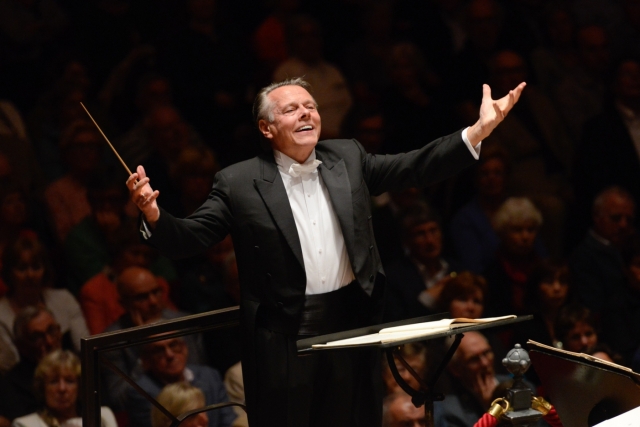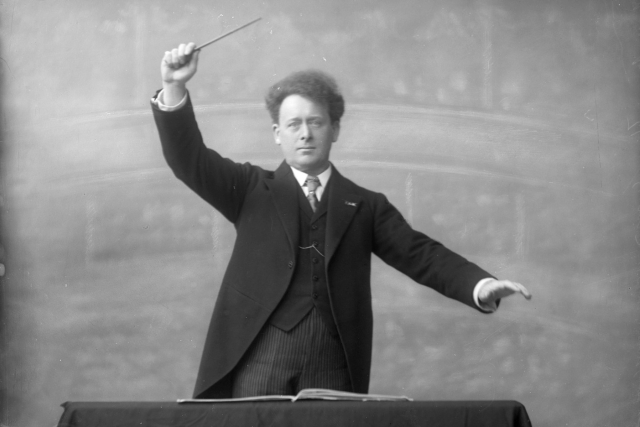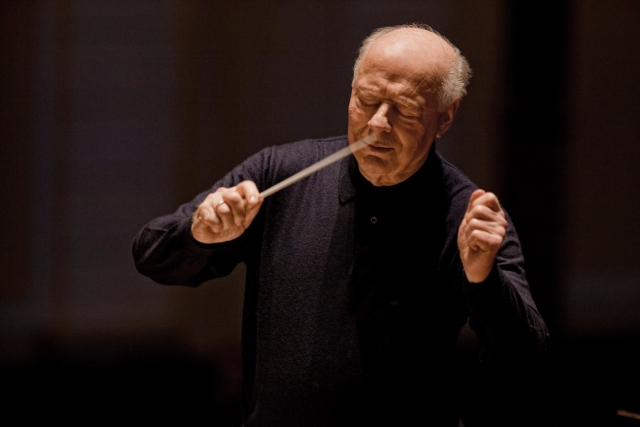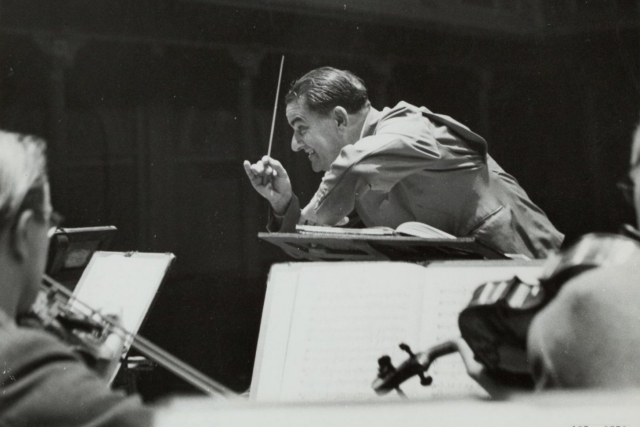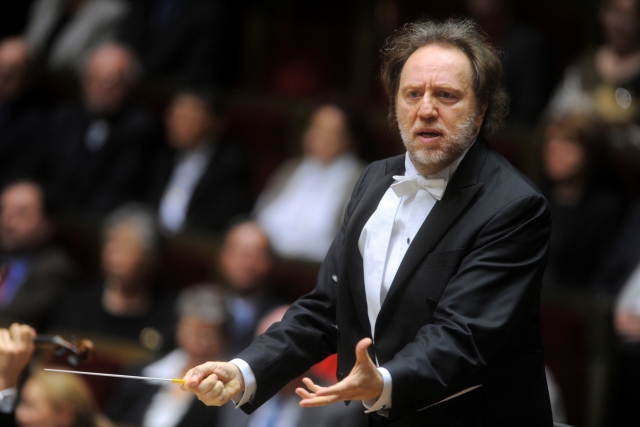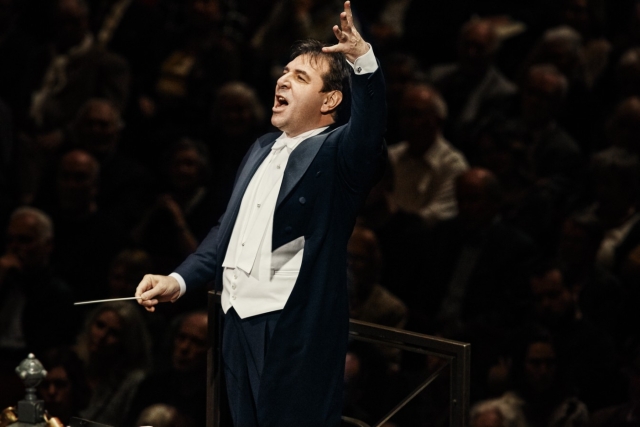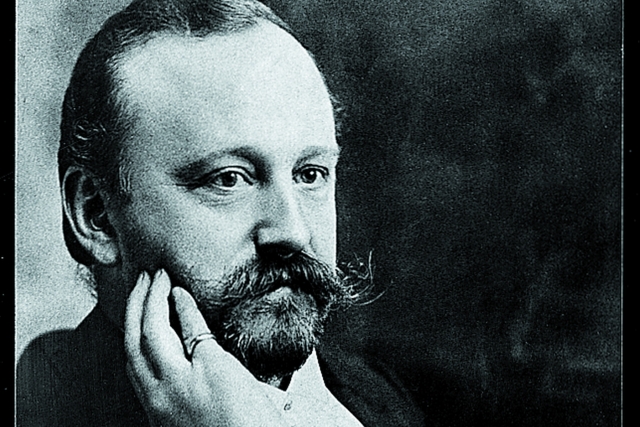Searching for a chief conductor
door Martijn Voorvelt 23 feb. 2021 23 februari 2021
In these strange times, how are things going with the Concertgebouworkest and its search for a new chief conductor? Christian van Eggelen and Jörgen van Rijen, two members of the orchestra closely involved in this process, share their thoughts and insights. ‘Conductors, too, are reorienting themselves.’
‘The orchestra is actually doing very well. We feel very privileged that we’re still able and allowed to perform. So we’re really giving it our all and are thrilled with the results. That said, we do very much miss performing for live audiences, and are all the more aware now of how crucial an audience is to what happens during a concert,’ says Christian van Eggelen, a member of the first violin section and chairman of the Board of the Vereniging ‘Het Concertgebouworchest’, the association representing the interests of the members of the orchestra and its staff.
‘The main thing is that the orchestra keeps playing and stays in shape. At the moment, we’re performing for cameras and microphones, but we know that people at home are enjoying the music,’ adds the orchestra’s principal trombonist Jörgen van Rijen. He is also a member of the Artistic Committee (AC), a group of orchestra members who work closely with the artistic staff.
‘The orchestra is actually doing very well. We feel very privileged that we’re still able and allowed to perform. So we’re really giving it our all and are thrilled with the results. That said, we do very much miss performing for live audiences, and are all the more aware now of how crucial an audience is to what happens during a concert,’ says Christian van Eggelen, a member of the first violin section and chairman of the Board of the Vereniging ‘Het Concertgebouworchest’, the association representing the interests of the members of the orchestra and its staff.
‘The main thing is that the orchestra keeps playing and stays in shape. At the moment, we’re performing for cameras and microphones, but we know that people at home are enjoying the music,’ adds the orchestra’s principal trombonist Jörgen van Rijen. He is also a member of the Artistic Committee (AC), a group of orchestra members who work closely with the artistic staff.
It’s the musicians’ turn
Self-governance has long been at the core of the Concertgebouworkest’s identity. Christian and Jörgen, together with bass clarinettist Davide Lattuada and a number of external board members, currently sit on the orchestra’s Executive Board. In that capacity, they are playing an important role in its search for a new chief conductor.
‘Now it’s the musicians’ turn,’ Christian explains. ‘The AC acts as a discussion leader, and I, as chair of the association Board, organise and oversee the process. We’ve jointly created a procedure – a framework in which talks are being held. What we’ve been doing a lot of lately is listening, though – listening to one another, to our new artistic director and to a number of guest conductors.’
Eventually, these discussions will lead to a vote whereby the musicians will issue a mandate to the Executive Board. ‘It’s my job to see that as many members of the collective as possible endorse that mandate,’ Christian says. Jörgen agrees: ‘Consensus is important. We’re hoping for a very large majority, but that takes time.’
Going for ten out of ten
At the orchestra, quality always comes first, as evidenced even by the rigorous auditions the Concertgebouworkest holds. Often enough, no candidate is chosen, and a vacancy may go unfilled for months.
Christian says, ‘We’re not an orchestra which is satisfied with scoring seven out of ten. We always go for ten out of ten no matter what. As far as the chief conductor is concerned, we’re looking for that special match we believe the orchestra, our audiences, the city of Amsterdam, the Netherlands and the international music world all deserve. That’s why we’re giving one another time. It would be a shame to rush things.’
‘We’re all wondering what the virus will mean for international concert life and, consequently, for the position of chief conductor and how that role is shaped.’
Paradoxically, the pandemic would seem to be facilitating the process. ‘Before the crisis,’ says Christian, ‘the timetable was pretty much always set in stone, but now things are suddenly much more open. The orchestra is more flexible.’
Jörgen adds, ‘Because of Covid-19, lots of conductors also have more availability, since many concerts abroad have been cancelled. The advantage that the orchestra can keep playing during this time enables us to maintain relationships with conductors. We actually have more freedom now to bring conductors in and reflect on our collaboration with them.’
Christian says, ‘It’s a time to take stock – conductors, too, are reorienting themselves. At the moment, we’re all wondering what the virus will mean for international concert life and, consequently, for the position of chief conductor and how that role is shaped. Maybe in ten years’ time we’ll all laugh at how much value and weight we once assigned to the title of chief conductor.’
The musicians insist that it’s not at all a bad thing that the orchestra is currently without a chief conductor of its own. After all, the artistic policy encompasses much more. ‘We perform a new programme each week – forty-two a season in total,’ Jörgen explains. ‘Twelve to fourteen of those are the chief conductor’s responsibility, but the other thirty weeks of the season are very important, too. It’s in those weeks that we work with a range of guest conductors – and this particular orchestra has managed to forge ties with some of the world’s very best. Just look at the names of those who have led the orchestra over the past few months, not to mention the ones who will soon be coming in to work with us – top conductors!’
It’s the musicians’ turn
Self-governance has long been at the core of the Concertgebouworkest’s identity. Christian and Jörgen, together with bass clarinettist Davide Lattuada and a number of external board members, currently sit on the orchestra’s Executive Board. In that capacity, they are playing an important role in its search for a new chief conductor.
‘Now it’s the musicians’ turn,’ Christian explains. ‘The AC acts as a discussion leader, and I, as chair of the association Board, organise and oversee the process. We’ve jointly created a procedure – a framework in which talks are being held. What we’ve been doing a lot of lately is listening, though – listening to one another, to our new artistic director and to a number of guest conductors.’
Eventually, these discussions will lead to a vote whereby the musicians will issue a mandate to the Executive Board. ‘It’s my job to see that as many members of the collective as possible endorse that mandate,’ Christian says. Jörgen agrees: ‘Consensus is important. We’re hoping for a very large majority, but that takes time.’
Going for ten out of ten
At the orchestra, quality always comes first, as evidenced even by the rigorous auditions the Concertgebouworkest holds. Often enough, no candidate is chosen, and a vacancy may go unfilled for months.
Christian says, ‘We’re not an orchestra which is satisfied with scoring seven out of ten. We always go for ten out of ten no matter what. As far as the chief conductor is concerned, we’re looking for that special match we believe the orchestra, our audiences, the city of Amsterdam, the Netherlands and the international music world all deserve. That’s why we’re giving one another time. It would be a shame to rush things.’
‘We’re all wondering what the virus will mean for international concert life and, consequently, for the position of chief conductor and how that role is shaped.’
Paradoxically, the pandemic would seem to be facilitating the process. ‘Before the crisis,’ says Christian, ‘the timetable was pretty much always set in stone, but now things are suddenly much more open. The orchestra is more flexible.’
Jörgen adds, ‘Because of Covid-19, lots of conductors also have more availability, since many concerts abroad have been cancelled. The advantage that the orchestra can keep playing during this time enables us to maintain relationships with conductors. We actually have more freedom now to bring conductors in and reflect on our collaboration with them.’
Christian says, ‘It’s a time to take stock – conductors, too, are reorienting themselves. At the moment, we’re all wondering what the virus will mean for international concert life and, consequently, for the position of chief conductor and how that role is shaped. Maybe in ten years’ time we’ll all laugh at how much value and weight we once assigned to the title of chief conductor.’
The musicians insist that it’s not at all a bad thing that the orchestra is currently without a chief conductor of its own. After all, the artistic policy encompasses much more. ‘We perform a new programme each week – forty-two a season in total,’ Jörgen explains. ‘Twelve to fourteen of those are the chief conductor’s responsibility, but the other thirty weeks of the season are very important, too. It’s in those weeks that we work with a range of guest conductors – and this particular orchestra has managed to forge ties with some of the world’s very best. Just look at the names of those who have led the orchestra over the past few months, not to mention the ones who will soon be coming in to work with us – top conductors!’
A long-term maintenance plan
So why, then, does the orchestra need a chief conductor at all? ‘The main reason is to set out a long-term plan together with the orchestra,’ Jörgen says. ‘I sometimes compare it to having a long-term home maintenance plan. Keeping your home in good nick doesn’t really mean you have to paint it every single year. Plus you can actually do most of the maintenance yourself. But it’s still a good idea to have a long-term plan in place and to hire in professional painters every once in a while. At the moment, the orchestra’s paint job is fresh and tidy – it sparkles and shines from every angle. But we still need someone at the helm who can look ahead with us to prevent chipping and flaking.’
Christian says, ‘Audiences actually only see the tip of the iceberg, the end performance. Obviously, we do our utmost to give the best concert we possibly can – that’s part and parcel of the pride we take in being professional artists. But the rest of the iceberg is submerged under water. That includes everything leading up to the performance, the process and technique of rehearsing. All this takes place between the conductor and the orchestra in total seclusion.
‘During this process, three key components must be brought into harmony with one another: a knowledge of the score, the physical performance and the collective emotion to be conveyed with a particular piece. One conductor may put more emphasis on one aspect, while a different conductor might focus more on another. Plus the orchestra has its own preferences.
‘It’s not just about playing – it’s mainly about listening to one another and seeking to achieve the perfect sound as a group. It’s all about trust, since the collaboration between the conductor and the orchestra is very intimate. No one else is there watching.’
Job profile
Because of this relationship of trust, it makes perfect sense that the musicians should choose their own chief conductor. ‘The musicians and conductor have to be able to trust one another that the process will result in something special,’ Christian says. ‘That’s why it really is a two-way street. There has to be trust on both sides.’
‘We have a very good idea of the kind of conductor who would and wouldn’t suit us.’
So what kind of chief conductor are the musicians looking for? The chief conductor’s role is different from orchestra to orchestra. In America, for instance, it’s customary that the artistic director largely oversees an orchestra’s artistic policy. But in the Concertgebouworkest’s case, the emphasis is more on collaboration, and that has implications for the ‘job profile’.
‘In our search, there’s no pool of applicants to draw on,’ says Jörgen. ‘From a limited number of candidates, you want to try to filter someone out who fits artistically with the orchestra and at the same time has interesting ideas for the future. Where will the orchestra be going? How will we reach new audiences? And, of course, it should be someone who has exceptional leadership qualities who can rally the orchestra’s support in a positive, motivating way.’
‘We’re looking for someone whose sound ideal is in consonance with the sound which the orchestra naturally produces in this hall,’ Christian adds. ‘It should also be someone who knows how to be vulnerable and whose disposition fits well with ours. Orchestras are all very different from one another. I think the Concertgebouworkest is very accommodating and flexible on the one hand, but on the other, has a very specific, Amsterdam-like democratic cheekiness to it. This is also clearly reflected in its structure – we have something to say about everything. I think it’s safe to say we have a very good idea of the kind of conductor who would and wouldn’t suit us.’
A long-term maintenance plan
So why, then, does the orchestra need a chief conductor at all? ‘The main reason is to set out a long-term plan together with the orchestra,’ Jörgen says. ‘I sometimes compare it to having a long-term home maintenance plan. Keeping your home in good nick doesn’t really mean you have to paint it every single year. Plus you can actually do most of the maintenance yourself. But it’s still a good idea to have a long-term plan in place and to hire in professional painters every once in a while. At the moment, the orchestra’s paint job is fresh and tidy – it sparkles and shines from every angle. But we still need someone at the helm who can look ahead with us to prevent chipping and flaking.’
Christian says, ‘Audiences actually only see the tip of the iceberg, the end performance. Obviously, we do our utmost to give the best concert we possibly can – that’s part and parcel of the pride we take in being professional artists. But the rest of the iceberg is submerged under water. That includes everything leading up to the performance, the process and technique of rehearsing. All this takes place between the conductor and the orchestra in total seclusion.
‘During this process, three key components must be brought into harmony with one another: a knowledge of the score, the physical performance and the collective emotion to be conveyed with a particular piece. One conductor may put more emphasis on one aspect, while a different conductor might focus more on another. Plus the orchestra has its own preferences.
‘It’s not just about playing – it’s mainly about listening to one another and seeking to achieve the perfect sound as a group. It’s all about trust, since the collaboration between the conductor and the orchestra is very intimate. No one else is there watching.’
Job profile
Because of this relationship of trust, it makes perfect sense that the musicians should choose their own chief conductor. ‘The musicians and conductor have to be able to trust one another that the process will result in something special,’ Christian says. ‘That’s why it really is a two-way street. There has to be trust on both sides.’
‘We have a very good idea of the kind of conductor who would and wouldn’t suit us.’
So what kind of chief conductor are the musicians looking for? The chief conductor’s role is different from orchestra to orchestra. In America, for instance, it’s customary that the artistic director largely oversees an orchestra’s artistic policy. But in the Concertgebouworkest’s case, the emphasis is more on collaboration, and that has implications for the ‘job profile’.
‘In our search, there’s no pool of applicants to draw on,’ says Jörgen. ‘From a limited number of candidates, you want to try to filter someone out who fits artistically with the orchestra and at the same time has interesting ideas for the future. Where will the orchestra be going? How will we reach new audiences? And, of course, it should be someone who has exceptional leadership qualities who can rally the orchestra’s support in a positive, motivating way.’
‘We’re looking for someone whose sound ideal is in consonance with the sound which the orchestra naturally produces in this hall,’ Christian adds. ‘It should also be someone who knows how to be vulnerable and whose disposition fits well with ours. Orchestras are all very different from one another. I think the Concertgebouworkest is very accommodating and flexible on the one hand, but on the other, has a very specific, Amsterdam-like democratic cheekiness to it. This is also clearly reflected in its structure – we have something to say about everything. I think it’s safe to say we have a very good idea of the kind of conductor who would and wouldn’t suit us.’
